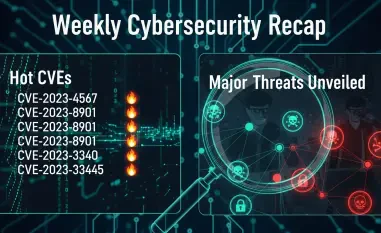Setting the Stage for Cybersecurity Challenges
In an era where digital infrastructure underpins nearly every aspect of global operations, the surge in Distributed Denial of Service (DDoS) attacks has emerged as a staggering threat, with attack volumes reaching an alarming 8.9 million incidents in just the first half of this year. These relentless assaults, often orchestrated by sophisticated cybercriminals leveraging AI-driven automation, can cripple businesses, disrupt critical services, and erode trust in digital ecosystems. Amid this escalating chaos, NetScout, a prominent player in the cybersecurity domain, offers a robust line of defense through its Arbor DDoS Protection suite. This review delves into the intricacies of NetScout’s technology, evaluating its features, performance, and relevance in combating the ever-evolving landscape of cyber threats.
Core Features of NetScout’s DDoS Protection Technology
Real-Time Threat Intelligence via ASERT Platform
NetScout’s ASERT platform stands at the forefront of its DDoS mitigation strategy, delivering real-time threat intelligence that enables rapid detection and response to malicious activities. By continuously analyzing global traffic patterns and attack signatures, this system empowers organizations to stay ahead of potential disruptions, identifying threats before they escalate into full-blown crises. The platform’s ability to provide actionable insights ensures that enterprises can adapt defenses dynamically, a critical asset in an environment where attack methodologies shift daily.
Beyond detection, ASERT integrates seamlessly with other NetScout tools, facilitating a coordinated response that minimizes downtime. This proactive approach is particularly valuable for sectors like finance and telecom, where even brief interruptions can result in significant financial and reputational damage. The platform’s emphasis on immediacy underscores NetScout’s commitment to preemptive cybersecurity measures.
Deep Packet Inspection for Encrypted Traffic
A distinguishing feature of NetScout’s technology lies in its use of deep packet inspection (DPI) to scrutinize network traffic, even when data is encrypted. This capability allows the system to uncover hidden malicious payloads that might otherwise evade traditional security measures, addressing a growing challenge as cybercriminals increasingly mask their activities. DPI ensures that threats are identified at a granular level, providing a robust shield against complex, multi-vector attacks.
The significance of this feature cannot be overstated in a landscape where encrypted traffic often serves as a cloak for nefarious intent. NetScout’s ability to dissect and analyze such data without compromising user privacy sets a high standard for precision in threat mitigation. This technical sophistication is a cornerstone of its appeal to organizations handling sensitive information.
Global Scrubbing Centers and Hybrid Deployment Model
NetScout bolsters its defense infrastructure with a network of 16 global scrubbing centers, boasting a collective capacity of 15 Tbps to filter out malicious traffic before it reaches target systems. These centers act as a first line of defense, absorbing and neutralizing volumetric attacks that could overwhelm unprotected networks. Their strategic distribution across the globe ensures low-latency responses, a vital factor for maintaining service continuity during peak attack periods.
Complementing this infrastructure is NetScout’s hybrid deployment model, which combines on-premises hardware with cloud-based solutions. This flexibility allows businesses to tailor their defenses based on specific needs, whether they require localized control or scalable cloud resources to handle massive attack surges. Such adaptability positions NetScout as a versatile solution provider in a market demanding customized cybersecurity frameworks.
Technological Innovation and Market Positioning
NetScout’s commitment to innovation is evident in its integration of artificial intelligence and machine learning to automate threat neutralization. These technologies enable the system to predict attack patterns and reduce response times to mere milliseconds, a game-changer in mitigating damage from rapid-fire assaults. By learning from each incident, the platform continually refines its algorithms, ensuring defenses evolve alongside emerging threats.
When compared to competitors like Akamai and Radware, NetScout holds a competitive edge through its emphasis on predictive and adaptive mechanisms. While others offer robust solutions, NetScout’s focus on automation and real-time adaptability provides a distinct advantage in handling the unpredictability of modern DDoS campaigns. This forward-thinking approach cements its reputation as a leader in the cybersecurity arena.
The technology’s impact extends beyond individual features, shaping industry standards for DDoS mitigation. With a market projected to grow from $18.36 billion this year to $58.11 billion by 2034, NetScout’s innovations align with the increasing demand for scalable, intelligent solutions. Its influence is particularly notable among Fortune 100 companies, where a 90% penetration rate reflects widespread trust in its capabilities.
Real-World Performance and Sector-Specific Impact
In practical applications, NetScout’s solutions have proven instrumental across high-stakes industries such as banking, financial services, and insurance, where digital uptime is non-negotiable. The technology safeguards critical transactions and customer data against disruptions, ensuring operational resilience even under intense attack conditions. Case studies from major financial institutions highlight how NetScout’s rapid response mechanisms have thwarted multi-vector attacks, preserving trust and stability.
Government and telecom sectors also benefit significantly from NetScout’s robust infrastructure. In environments where national security and communication networks are prime targets for state-sponsored cyber warfare, the ability to deflect massive attack volumes is paramount. NetScout’s global scrubbing capacity and hybrid model offer tailored protection that meets the stringent demands of these sectors.
The widespread adoption of this technology underscores its reliability in diverse scenarios. From protecting e-commerce platforms during peak traffic events to securing public sector digital assets, NetScout demonstrates a versatility that few competitors can match. This broad applicability reinforces its standing as a trusted partner for enterprises navigating complex digital challenges.
Challenges and Areas for Improvement
Despite its strengths, NetScout faces significant hurdles in keeping pace with the rapid evolution of AI-powered botnets that orchestrate increasingly sophisticated attacks. These advanced threats often employ multi-vector strategies that test the limits of even the most cutting-edge defenses, requiring constant updates to mitigation tactics. Staying ahead of such innovation remains a persistent challenge for the company.
Competitive pressures also loom large, as rival firms continuously introduce niche solutions that target specific attack vectors. Maintaining leadership in this crowded space demands relentless investment in research and development, a financial burden that could strain resources over time. NetScout must balance innovation with cost efficiency to retain its market position.
Additionally, broader market risks in the cybersecurity domain, such as regulatory changes and geopolitical tensions, add layers of uncertainty. While NetScout has shown resilience, adapting to these external factors requires strategic foresight. Addressing these challenges head-on will be crucial for sustaining long-term relevance in an unpredictable landscape.
Looking Ahead: NetScout’s Future Trajectory
As cloud-based solutions gain traction, projected to capture 51% of the market share in coming years, NetScout’s hybrid model positions it well to capitalize on this shift. The growing reliance on cloud infrastructure for scalability aligns with the company’s existing strengths, offering opportunities to expand its footprint among enterprises transitioning to digital-first operations. This trend signals a promising avenue for growth.
The rise of geopolitical cyber warfare further amplifies the need for robust mitigation technologies. With state-sponsored attacks becoming more prevalent, NetScout’s expertise in handling large-scale threats could solidify its role as a key ally for governments and critical infrastructure providers. Leveraging this demand will be essential for shaping its strategic direction.
Moreover, the increasing complexity of AI-driven threats necessitates deeper integration of predictive analytics and automation. NetScout’s ongoing investments in these areas suggest a proactive stance, but scaling these capabilities to address future attack vectors will test its adaptability. Continuous evolution remains the linchpin for maintaining a competitive edge over the long term.
Final Reflections on NetScout’s Impact
Looking back, this review highlights how NetScout’s Arbor DDoS Protection suite stands as a formidable barrier against the relentless tide of cyber threats that define the digital landscape. Its innovative features, from real-time threat intelligence to global scrubbing centers, deliver a compelling defense mechanism that resonates across critical industries. The technology’s performance in safeguarding high-stakes environments cements its value in an era of unprecedented attack sophistication.
For organizations seeking to fortify their digital defenses, exploring NetScout’s hybrid solutions offers a practical starting point to address both current and emerging risks. Stakeholders are encouraged to assess how this technology can integrate with existing systems to enhance resilience, particularly in sectors vulnerable to disruption. Partnering with a proven provider like NetScout could pave the way for sustained security.
Beyond immediate adoption, the broader industry is urged to monitor how NetScout adapts to the accelerating pace of AI-driven threats and geopolitical challenges. Engaging with evolving standards and contributing to collaborative defense initiatives could amplify the impact of such technologies. As the cybersecurity battleground continues to shift, staying informed and agile remains the best strategy for navigating future uncertainties.













